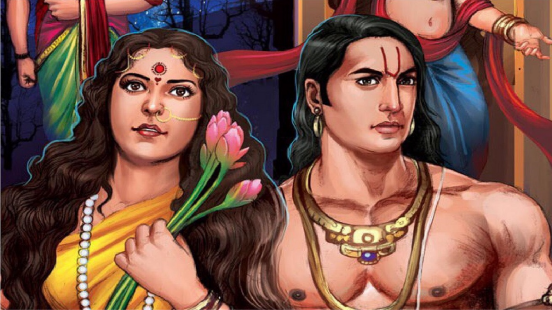For smooth Ad free experience
For smooth Ad free experience
The origin of the Chandravanshi lineage is an interesting story. This story has been narrated in many early Indian scriptures, and it appears to be one of the first references to existence of bisexual people in the Indian community. But there is a catch here. The person from whom the lineage began had the same person as his father and mother.

Tales From The World Of LGBTQ+
Vaisvrata Manu, the progenitor of human beings on Earth according to Hindu mythology, was childless for a long time. After observing futile penance and sacrifices, he kept on desperately longing for a child. With the advice of Sage Vasishtha, Vaisvrata Manu performed a fire sacrifice to please the gods Mitra (the Hindu god of friendship, oath, and contract) and Varuna (the Hindu God of rain). The gods were pleased and thus granted the wish of a child.
Very soon, Shraddha, Vaisvrata Manu’s wife, gave birth to a daughter named Ila. Manu did not like this. He was petrified. He wanted a son who could rule after him and carry forward his lineage. A furious Manu went to the Sage Vashistha to complain about his woes. The Sage used his powers to change the gender of Ila. So, little Ila turned into a boy called Sudyumna.
But probably fate was against Manu. Years later, when Sudyumna grew up, he entered an enchanted forest during one of his hunting expeditions. This forest was the abode of Goddess Parvati, the consort of Lord Shiva. According to a curse, any man entering the forest would turn into a female. And therefore, Sudyumna turned into a female. No one could reverse the curse and turn him back into a male form. Shiva, later on, made alternations to it. Sudyumna would have to live by interchanging his gender.
When in woman form, she was the beauty named Ira or Ila. Even Budha, the god of Mercury and the son of Chandra –the moon god, fell in love with her. He married Ila, and after spending a month with her husband, Ila changed into a man. His name was Sudyumna then. He did not remember the part of his life when he was transformed into a female. Budha understood the condition. He took Sudyumna as his pupil and taught him the scriptures. Every alternate month he would have his wife with him, and they would live happily. After nine months, Ila gave birth to a child called Pururava.
Later Budha decided to divulge the condition of Ila/ Sudyumna in front of Sudyumna. He decided to take his son and go back to his kingdom and rule as a king. Later on, he remarried and had three other sons. Every alternate month he would disappear from all worldly affairs and live in closed quarters as a woman. But this later caught the attention of his subjects, and so he placed Pururava on the throne and deserted the kingdom to live in the forest. As Pururava was the grandchild of Chandra, thus began the rule of Chandravanshi in India.
This whole narrative can be found in the Puranas, the Mahabharata, and the Ramayana, with a bit of variation here and there. But in every narrative, the role of Ila, the consort of Budha remains the same. She kept on changing her gender throughout her life and lived her life as a beautiful woman in love with her husband and also as a powerful king ruling his kingdom diligently.
Indian scriptures have always touched on the topics of LGBTQ. Maybe the topics of LGBTQ was not highlighted in academics in a way that would bring more attention to it. And therefore, the common people have never been made aware of the existence of transsexuality in the community since the time of human evolution. We can just assume this to be a symbolic representation of the evidence of transsexuals in early Indian society, for which the scholars attempted to include them in their writings.
0
You might be interested in reading more from
